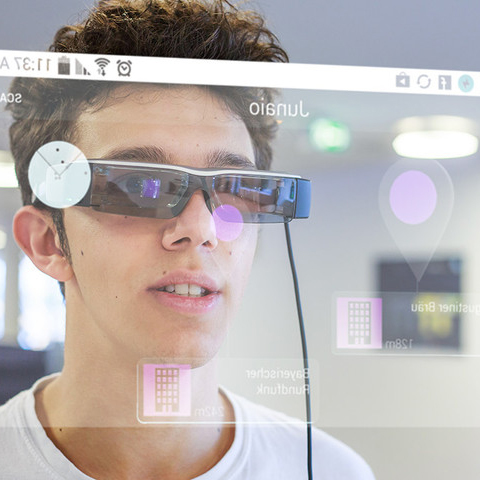During this past week, the newest challenge for the students of the Service Deisgn Master has been working on a project for Design Group Italia. Keyword were: augment reality and food. The time was really short and tight, but we had the possibility to research a bit around the topic: futuristic technology, high concepts, glasses of course, and new possible experiences to live thanks to the augmented reality.
I had a previous experience dealing with this topic few years ago, and of course this design-pill reminds me about an interesting discussion I had with designers an developers working in Metaio, a german company based in Munich that develops software technology and provides augmented reality solutions. The point, at that time, was to understand how AR (augmented reality) could change the general customer experiences in different field, especially in the retail market.
When my working team mates and I visited the company, back in 2011, they were working on an interesting project in collaboration with Lego called Lego Digital Box. To my point of view it was clear that the sharpest change in the approach retailers have taken toward customers in the last few decades, has been with respect to the power the consumer has had in its interactions with the brand. The various marketing strategies that have become part of the general retail brand to customer approach such as geo-targeting, gamification, multichannel interactions, and online loyalty programs have led to an entirely different approach to how retailers conduct business. Clearly, this strategy places power in the hands of consumers more than ever before.
Of course the most significant specific trend within the new customer-centric universe has been the pervasiveness of mobile as the leading technology in the movement toward omnichannel marketing. While consumers are now interacting with brands through a variety of different media including email, social media, PCs, tablets, smartphones and the store, mobile has taken the lead as the dominant channel for retailers based on its convenience and consistent presence with the consumer. Mobile technologies of course can open the door to the widest amount of potential campaigns and individual interactions brands can have with consumers. They allow retailers to create bargaining chips that encourage footfall, improve customer basket size, receive real-time customer feedback and engage customers in a more holistic way. Even at that time, it was clear also that the leader of this “revolution” was and will be undoubtedly augmented reality technology.
AR is the future of mobile, allowing consumers to experience their own reality based on personal inclinations. While customers have had the option to interact with brands on social media for more than a decade, AR presents a whole new way of engaging that further expands the abilities of retailers while completely enhancing the customer experience. The possibilities with AR are limitless. When combined with already powerful mobile technologies, AR allows for geo-targeting that expands far beyond the standard markers of language and location into an actual visual, interactive representation of the culture surrounding the store or the customers in the vicinity of the retailer. This adds elements to the store that encompass the exclusivity and personalization currently highly sought by retail customers of all segments.
Furthermore, augmented reality can create an incredible gamification atmosphere where customers can fully experience the retailer’s brand experience and offering and earn their way toward coupons, points and rewards that are highly customized to individual shoppers. That gamification comes with a flourish that gamifies previously static scenarios.
Meanwhile, retailers enjoy the advantages that come with improving customer experience as a whole and facilitating a seamless omnichannel experience with customers. The personalization, customization and engagement AR encourages are very powerful. One of the most game-changing advantages of AR is the incredible real-time feedback AR has to offer. Previously, in the customer environment, information from different channels was difficult to collect into one individual profile capable of providing a complete picture of the customer. With the rise of omnichannel marketing, retailers can now draw information from enough different sources to build a complete profile of individual customers to allow richer personalization. Now, with AR, customer feedback can come in the form of items tried on, talking about clothes or shoes for example, or how the items were tried on, whether or not customers shared them in other channels, what channels they shared them in, how long they looked at a particular item and more. AR insights are, quite simply, the most advanced understanding retailers can form of their customers, and the feedback happens entirely in real-time, allowing for the highest level of responsiveness in the most adaptable possible format.
In the end I admit I am totally not into technologies and I barely understand how AR really work, but I also have to say I can strongly feel the power this approach can bring to totally new customer experiences. Of course, as was the case with e-commerce and social media, moving first on AR is an opportunity that will only come once and will only be effective during a specific window. And I think that window is now.

